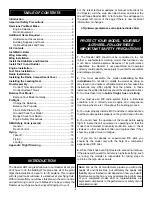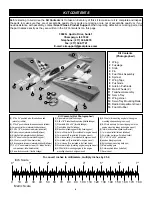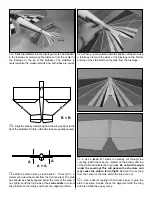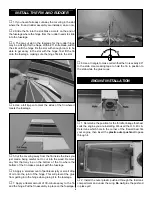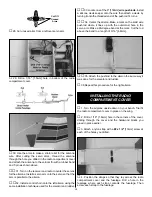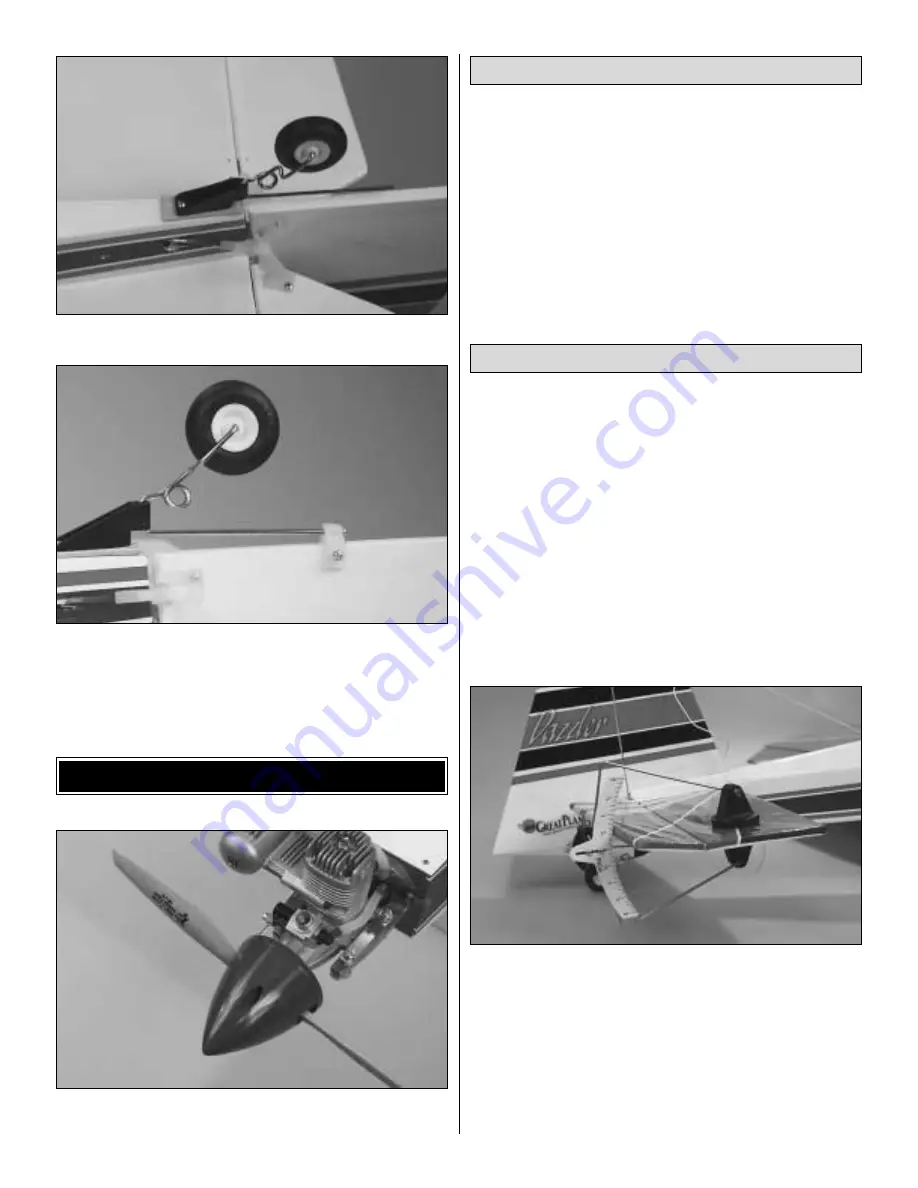
❏
11. Screw the tailwheel assembly to the plate.
❏
12. Locate the plastic tailwheel bracket. Slide it onto the
wire, then press it firmly onto the rudder. Once in place drill
a 1/16" [1.6mm] hole into the rudder. Secure the bracket to
the rudder with a #2 x 1/2" [13mm] sheet metal screw.
❏
1. Install the spinner and the propeller appropriate for your
choice of engine.
By moving the position of the clevis at the control horn
toward the outermost hole, you will decrease the amount of
throw of the control surface. Moving it toward the control
surface will increase the amount of throw. If these
adjustments don't accomplish the job, you may need to work
with a combination of adjustments by also repositioning the
pushrod at the servo end. Moving the pushrod towards the
center of the servo horn will decrease the control surface
throw – outward will increase it.
Note: Throws are measured at the widest part of the
elevators, rudder and ailerons. We recommend the following
control surface throws as a starting point:
Low Rate
High Rate
ELEVATOR:
3/8" [9.5mm] up
1/2" [13mm] up
3/8" [9.5mm] down
1/2" [13mm] down
RUDDER:
1-1/4" [32mm] right
Same
1-1/4" [32mm] left
Same
AILERONS:
3/8" [9.5mm] up
3/4" [19mm] up
3/8" [9.5mm] down
3/4" [19mm] down
One leading cause of crashes is flying an airplane with its
control throws set differently from those recommended in the
instructions. The Great Planes AccuThrow
™
GPMR2405 lets
you quickly and easily measure actual throws first, so you can
make necessary corrections before you fly. Large, no-slip rubber
feet provide a firm grip on covered surfaces without denting or
marring the finish. Spring tension holds AccuThrow's plastic
ruler steady by each control surface. Curved to match control
motions, the ruler provides exact readings in both standard or
metric measurements.
Control Surface Throws
Control Throw Adjustment
FINAL ASSEMBLY
15


